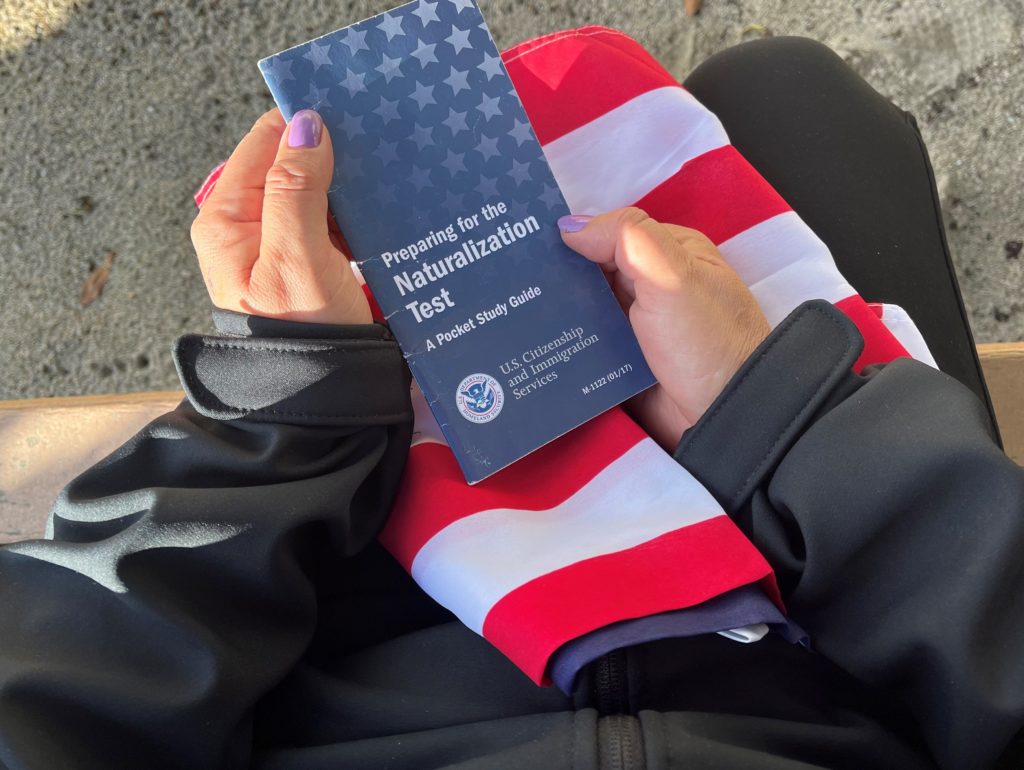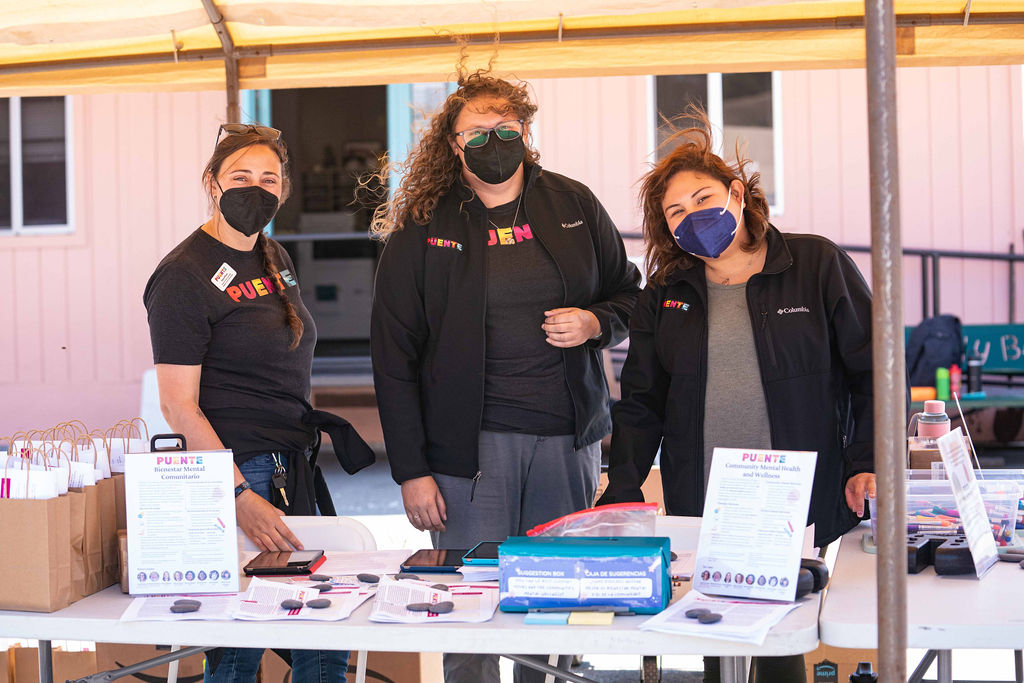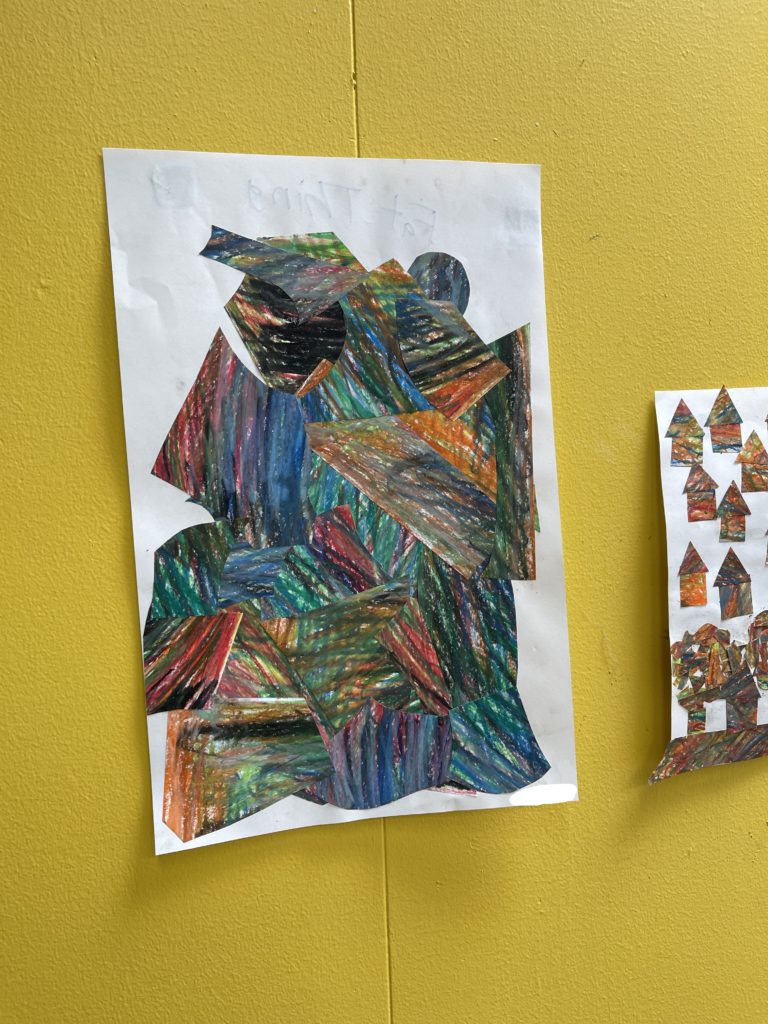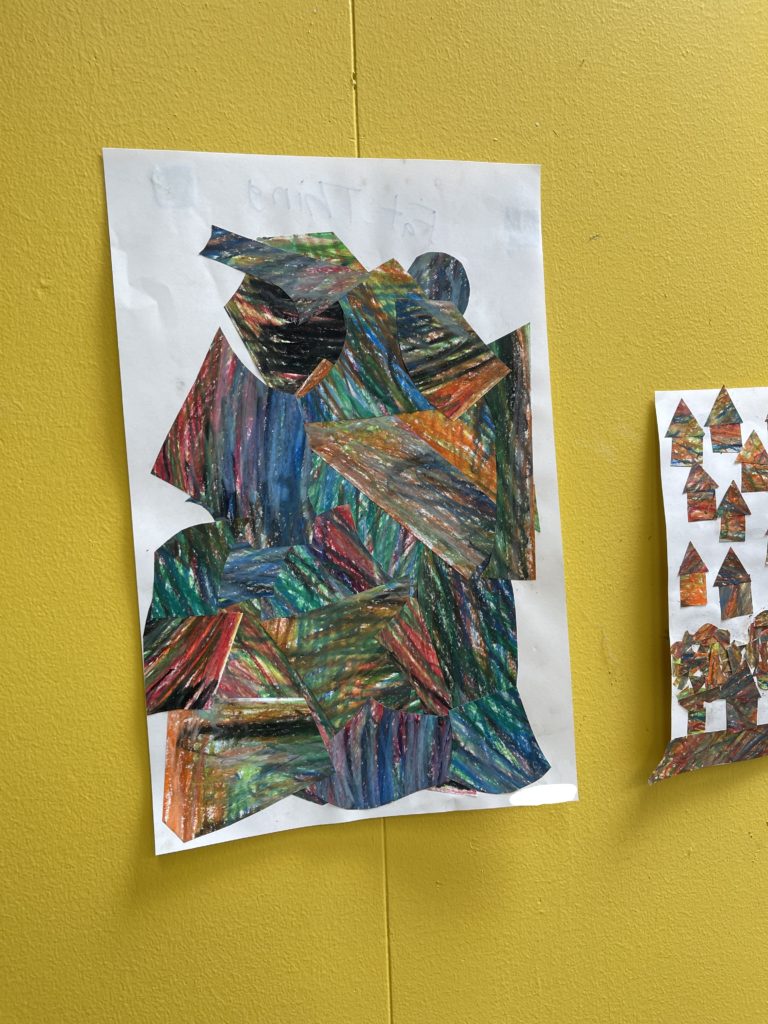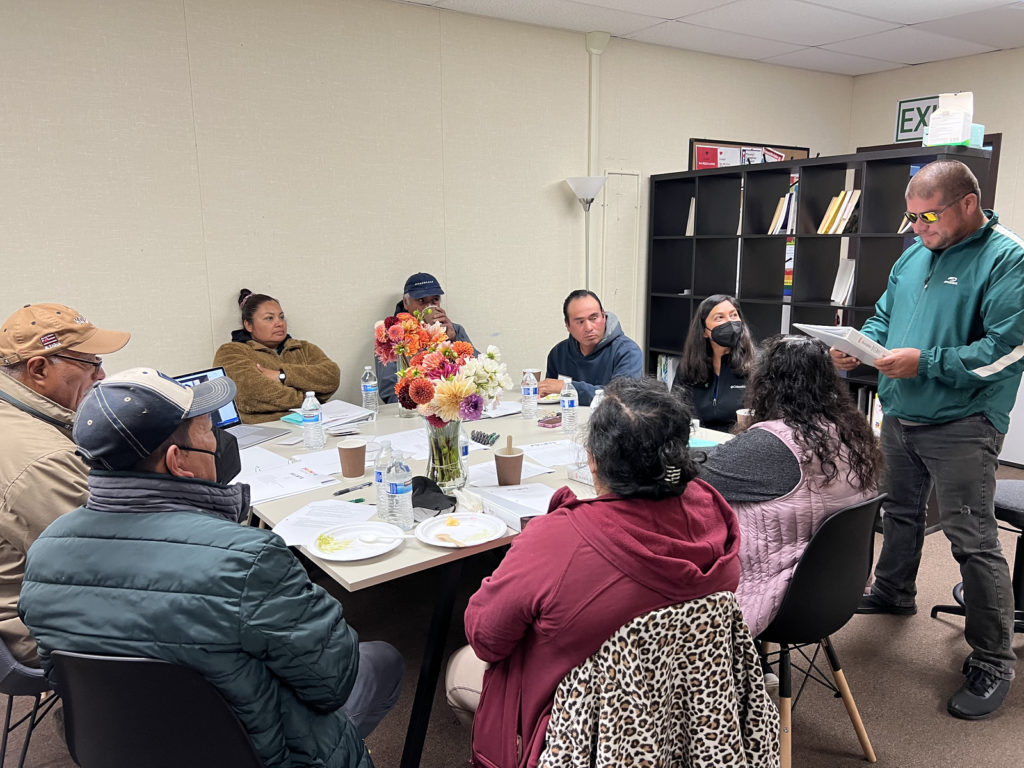
Puente has supported the rights of community members and farmworkers since inception. Now, two new initiatives from 2022 have gained steam. One is an effort to revamp rental leases to give the South Coast community tools to advocate for themselves with landlords. The other is a convening of residents who are determined to push for direct political change through grassroots campaigns.
Both efforts grew out of Puente’s 2021 Strategic Plan, which broadened Puente’s focus to shifting power to community members. From now on, Puente will help participants use their power to speak for themselves whenever possible, and support them as they advocate for change on behalf of their families and future generations.
“We’re very used to Puente being at the front of the room and advocating. The vision that we have is that Puente can stay in the back and support the leaders, because change happens when people who need it, lead it.” says Puente Executive Director, Rita Mancera.
Below are the stories of how these two initiatives came about: Del Campo Al Cambio and the Model Lease Program.
“It’s not always other people’s job to help us”: Del Campo Al Cambio (‘From the Field to Change’)
Carina Aguirre always thought it was strange that Pescadero didn’t have some things a town usually does: a public park for kids to play in, a grocery store, and a laundromat.
The hardworking local mom, whose daughter is nearly 4 years old, arrived in Pescadero in 2015 from Guanajuato, Mexico. At first, she busied herself finding a place to live, and finding enough work to cover her rent while also sending some money home to support her mother.
Carina, whose name has been changed for this story, works full time cleaning houses and in agriculture, pruning after a harvest and prepping the fields for next year. Carina, with her partner and her daughter, share a single bedroom in a home with another family.
Part of getting to know Pescadero was learning about Puente. Over the years, Carina has participated in Puente programs and services: getting health insurance, free dental care and vaccines; taking ESL, computer and prenatal classes; and even enrolling in a Ballet Folklórico dance workshop for adults.
After several years, she began to amass some observations about the critical issues in town – and some of the forces at play that seem to prevent needed improvements to infrastructure and services.
“I keep hearing about things that are needed and wanted – like housing, a health clinic, a library, a park for kids – and they keep getting shut down,” she remarks.
As a key stakeholder and voice for the community on issues that concern quality of life for residents, Puente helped organize the 2019 Pescadero Town Planning Initiative, a bilingual effort to collect community ideas for the town’s most-needed improvements and then put them into action at the county level. There was a similar process in 2014. Other efforts to confront the chronic lack of affordable, quality housing on the South Coast have struggled.
But none of these efforts have been undertaken exclusively by Latino/a* community members (Latino/a* includes: Mexican, Guatemalan, Salvadorian, People of Color, Latinos, Latina, Latinx, Mexican descent, Hispanic, Indigenous and Mixed.) – particularly those who have limited access to transportation and are therefore deeply affected by the lack of a medical clinic, laundromat and other essential services in town.
The lack of housing options is another urgent issue. The problem is keenly felt by agricultural and service workers, who are raising their families in cramped, older structures. And much of that housing is owned by the farm employers themselves. The housing crisis extends and is felt throughout the community, county and statewide.
Enter Del Campo Al Cambio (‘From the Field to Change’). The Puente-backed program has recruited participants — natural-born leaders who are already invested in improving their community — and gave them training and tools to make political headway on tackling big issues they want to focus on.
The group of 12 women and men meets monthly and two of its members have already been elected to serve on the newly formed San Mateo County Farmworker Advisory Commission.
This is a long-term project, with initial funding to start this pilot program supported by the Latino Community Foundation. Group members receive training on communal decision-making, campaign-building and public speaking as they democratically decide which key issues to push for.
“This program is inspired by community members who are already leaders – we’re just providing the structure,” says Mancera from Puente.
“This is all about empowering local leaders so they can go out and represent their families,” adds Hyun-mi Kim, Director of Puente’s Rural Community Engagement and Public Policy.
Carina joined the group, despite some early concerns about the size of the commitment she was taking on and what it would entail.
“If we are able to make a change, it’s not just going to be for ourselves but for the community. There’s a lot of things that we need. Even if only one thing out of all of these needs gets done, I think I will be happy, and other community members will be happy,” she says.
Personally, Carina would like to advocate for the construction of a park for children in downtown Pescadero. “It would help to have a park where my daughter and other kids could develop skills like climbing a ladder or hanging on a jungle gym. They need that experience,” she adds.
Learning to work within a group of 12 has been an educational experience. So far, Carina says, “I’m learning to listen to others. I’m learning to work with others. I’m getting the opportunity to get to know other people in a deeper, personal way more than just seeing them around the community.”
The process has also shifted something inside of her. “I’m learning not to be afraid of saying what is on my mind without being judged,” she adds.
All decisions, such as how to organize themselves as a group or finding consensus around strategy, are up to participants. The unique experience has given group members a new perspective on just how much work it takes to make a change.
“We’re learning that it’s not easy, and that we shouldn’t wait for others to come help us,” observes Carina. “We need to knock on doors to make some things happen. I am also grateful that my voice matters, that someone is hearing me and listening to what I have to say.”
Model Lease program empowers tenants and helps landlords, too
As the Director of Rural Community Engagement and Public Policy, Hyun-mi Kim oversees Puente’s housing advocacy project. A Model Lease program, a new initiative to update the lease that farmworker tenants sign with their bosses – who also sometimes happen to be their landlords, is an important step in creating an equitable relationship between employers and tenants. Lease contracts are hard-to-read, xeroxed documents that sometimes date back as early as the 1980s, and they are often written only in English, not Spanish.
As a result, tenants frequently sign these documents without understanding them. “We often hear from farmworker tenants, letting us know that they have not been provided with a lease. Or even when they have a lease, it’s not in their native language,” says Kim. “There’s also a lot of legal jargon that is difficult to understand.”
There’s already a significant power differential between landlords and tenants. When your landlord is also your employer – and there are no other options for housing in the area – it can easily dissuade a tenant from complaining about broken fixtures or appliances, or even unsafe conditions like vermin, lack of heating or ventilation.
“Sometimes we see people feeling confused or fearful of even asking, when something is broken… am I in charge of fixing it? And sometimes our team is hesitant to intervene with a landlord, let alone a tenant, when they fear losing their housing or creating an uncomfortable situation with their employer,” says Kim.
The Model Lease program proceeds along two fronts: a series of “Know your Rights” meetings in English for farmworker tenants, which culminated in a brochure available in both Spanish and Spanish directed at tenants living in housing provided by employers; and the creation of a new, default bilingual lease template approved by both local tenants and landlords, which landlords can begin using sometime towards late 2023.
Both efforts proceed from a common understanding: the message that good landlord/tenant relations are the responsibility of both parties. Puente, in partnership with Centro Legal De La Raza, has created the community’s first Know Your Rights: Tenants’ Rights in Employer-Owned Housing pamphlet, both in English and Spanish. More than 100 copies have already been picked up by community members. It uses simple language to explain why it is important to have a lease, how much of a rent increase is allowed, why you need to pay rent on time, and who is responsible for housing repairs, so tenants can report issues without fear of eviction.
“We are not just implementing this to protect tenants,” says Kim, “but also to inform them when you are a renter, you also have responsibilities that you need to follow so you don’t get into trouble.”
The new leases are being workshopped by tenants and landlords, who have welcomed the updates. They will be electronically-generated so landlords can fill out the required fields before printing them out to be read and signed.
“Recently, I was in a meeting where farmers said they think this will be a useful tool and a benefit. They reported to be using very old leases,” says Mancera.
Empowerment starts with education. And when participants can imagine better outcomes for themselves – whether that is organizing a campaign for essential improvements to their town, or a fear-free conversation with their landlord – another life is possible.
Thank you to our supporters who have supported the launch of this initiative. If you would like to support this program please consider donating today.
Campaña comunitaria de autodefensa lista para entrar en 2023
Puente ha apoyado los derechos de los miembros de la comunidad y los trabajadores agrícolas desde el inicio. Ahora, dos nuevas iniciativas de 2022 han ganado fuerza. Uno es un esfuerzo por renovar los contratos de arrendamiento para brindarle a la comunidad de la Costa Sur herramientas para defenderse ante los propietarios. El otro es una convocatoria de residentes que están decididos a impulsar un cambio político directo a través de campañas de base.
Ambos esfuerzos surgieron del Plan Estratégico 2021 de Puente que amplió el enfoque de Puente para transferir el poder a los miembros de la comunidad. De ahora en adelante, Puente ayudará a los participantes a usar su poder para hablar por sí mismos siempre que sea posible, y los apoyará mientras abogan por el cambio en nombre de sus familias y las generaciones futuras.
“Estamos muy acostumbrados a que Puente esté al frente de la sala y abogue. La visión que tenemos es que Puente pueda tomar un paso atrás y apoyar a los líderes, porque el cambio ocurre cuando las personas que lo necesitan, lo lideran”. dice la Directora Ejecutiva de Puente, Rita Mancera.
A continuación, las historias de cómo surgieron estas dos iniciativas: Del Campo Al Cambio y el Programa de Arrendamiento para miembros de la comunidad.
“No es siempre el trabajo de otros, ayudarnos”: Del Campo Al Cambio (‘Del Campo al Cambio’)
Carina Aguirre siempre pensó que era extraño que Pescadero no tuviera algunas de las cosas que normalmente tiene un pueblo: un parque público para que jueguen los niños, una tienda de comestibles y una lavandería.
La mamá local trabajadora, cuya hija tiene casi 4 años, llegó a Pescadero en 2015 desde Guanajuato, México. Al principio, se ocupó de encontrar un lugar para vivir y encontrar suficiente trabajo para cubrir su alquiler mientras enviaba algo de dinero a casa para mantener a su madre.
Carina, cuyo nombre ha sido cambiado para esta historia, trabaja a tiempo completo limpiando casas y en la agricultura, podando después de una cosecha y preparando los campos para el próximo año. Carina, con su pareja y su hija, comparten un dormitorio individual en una casa con otra familia.
Parte de conocer a Pescadero fue conocer a Puente. A lo largo de los años, Carina ha participado en los programas y servicios de Puente: obteneniendo seguro médico, atención dental y vacunas gratuitas; tomando clases de ESL, computación y prenatales; e incluso inscribirse en un taller de danza Ballet Folklórico para adultos.
Después de varios años, comenzó a recopilar algunas observaciones sobre los problemas críticos de la ciudad y algunas de las fuerzas en juego que parecen impedir las mejoras necesarias en la infraestructura y los servicios.
“Sigo escuchando cosas que se necesitan y se desean, como vivienda, una clínica de salud, una biblioteca, un parque para niños, y siguen cerrando”, comenta.
Como parte interesada clave y voz de la comunidad en temas relacionados con la calidad de vida de los residentes, Puente ayudó a organizar la Iniciativa de Planificación Urbana de Pescadero 2019, un esfuerzo bilingüe para recopilar ideas de la comunidad para las mejoras más necesarias del pueblo y luego ponerlas en acción en el nivel del condado. Hubo un proceso similar en 2014. Otros esfuerzos para enfrentar la falta crónica de viviendas asequibles y de calidad en la costa sur han tenido problemas.
Pero ninguno de estos esfuerzos ha sido realizado exclusivamente por miembros de la comunidad latina/a*(Latino/a* incluye: mexicanos, guatemaltecos, salvadoreños, personas de color, latinos, latinas, latinx, descendientes de mexicanos, hispanos, indígenas y mestizos), particularmente aquellos que tienen acceso limitado al transporte y, por lo tanto, se ven profundamente afectados por la falta de una clínica médica, lavandería y otros servicios esenciales en la ciudad.
La falta de opciones de vivienda es otro problema urgente. El problema lo sienten profundamente los trabajadores agrícolas y de servicios, que están criando a sus familias en estructuras antiguas con falta de reparaciones. Y gran parte de esa viviendas son propiedad de los propios dueños de los ranchos. La crisis de la vivienda se extiende y se siente en toda la comunidad, el condado y el estado.
Ingresa Del Campo Al Cambio. El programa respaldado por Puente ha reclutado participantes, líderes natos que ya están comprometidos con la mejora de su comunidad, y les ha brindado capacitación y herramientas para lograr avances políticos al abordar los grandes problemas en los que desean enfocarse.
El grupo de 12 mujeres y hombres se reúne mensualmente y dos de sus miembros ya han sido elegidos para servir en la recién formada Comisión Asesora de Trabajadores Agrícolas del Condado de San Mateo.
Este es un proyecto a largo plazo, con financiamiento inicial para iniciar este programa piloto respaldado por Latino Community Foundation. Los miembros del grupo reciben capacitación sobre la toma de decisiones comunales, la creación de campañas y la oratoria mientras deciden democráticamente qué temas clave impulsar.
“Este programa está inspirado en miembros de la comunidad que ya son líderes; solo estamos brindando la estructura”, dice Mancera de Puente.
“Se trata de empoderar a los líderes locales para que puedan salir y representar a sus familias”, agrega Hyun-mi Kim, Directora de Política Pública y Participación de la Comunidad Rural de Puente.
Carina se unió al grupo, a pesar de algunas preocupaciones iniciales sobre el tamaño del compromiso que estaba asumiendo y lo que implicaría.
“Si somos capaces de hacer un cambio, no será solo para nosotros sino para la comunidad. Hay muchas cosas que necesitamos. Incluso si solo se hace una cosa de todas estas necesidades, creo que estaré feliz y otros miembros de la comunidad estarán felices”, dice ella.
En lo personal, a Carina le gustaría abogar por la construcción de un parque para niños en el centro de Pescadero. “Sería útil tener un parque donde mi hija y otros niños pudieran desarrollar habilidades como subir una escalera o colgarse de un juego de gimnasia. Necesitan esa experiencia”, añade.
Aprender a trabajar en un grupo de 12 ha sido una experiencia educativa. Hasta ahora, Carina dice: “Estoy aprendiendo a escuchar a los demás. Estoy aprendiendo a trabajar con otros. Estoy teniendo la oportunidad de conocer a otras personas de una manera más profunda y personal, más que solo verlos en la comunidad”.
El proceso también ha cambiado algo dentro de ella. “Estoy aprendiendo a no tener miedo de decir lo que tengo en mente sin ser juzgada”, agrega.
Todas las decisiones, tales como cómo organizarse como grupo o encontrar un consenso en torno a la estrategia, dependen de los participantes. La experiencia única les ha dado a los miembros del grupo una nueva perspectiva sobre cuánto trabajo se necesita para hacer un cambio.
“Estamos aprendiendo que no es fácil y que no debemos esperar a que otros vengan a ayudarnos”, observa Carina. “Necesitamos tocar puertas para que algunas cosas sucedan. También estoy agradecida de que mi voz importe, que alguien me esté escuchando y escuchando lo que tengo que decir”.
El programa de Arrendamiento (Model Lease) empodera a los inquilinos y también ayuda a los propietarios
Como Directora de Políticas Públicas y Participación de la Comunidad Rural, Hyun-mi Kim supervisa el proyecto de defensa de la vivienda de Puente. Un programa de arrendamiento modelo, una nueva iniciativa para actualizar el contrato de arrendamiento que los trabajadores agrícolas inquilinos firman con sus jefes, que a veces también son sus propietarios, es un paso importante para crear una relación equitativa entre empleadores e inquilinos. Los contratos de arrendamiento son documentos fotocopiados difíciles de leer que a veces se remontan a la década de 1980 y, a menudo, están escritos solo en inglés, no en español.
Como resultado, los inquilinos frecuentemente firman estos documentos sin entenderlos. “A menudo escuchamos de inquilinos que también son trabajadores agrícolas nos informan que no se les ha proporcionado un contrato de arrendamiento. O incluso cuando tienen un contrato de arrendamiento, no está en su idioma nativo”, dice Kim. “También hay mucha jerga legal que es difícil de entender”.
Ya existe una diferencia de poder significativa entre propietarios e inquilinos. Cuando su arrendador también es su empleador, y no hay otras opciones de vivienda en el área, puede disuadir fácilmente a un inquilino de quejarse de accesorios o electrodomésticos rotos, o incluso condiciones inseguras como alimañas, falta de calefacción o ventilación.
“A veces vemos personas que se sienten confundidas o temerosas incluso de preguntar, como cuando algo se rompe… ¿estoy a cargo de arreglarlo? Y, a veces, nuestro equipo duda en intervenir con un propietario, y mucho menos con un inquilino, cuando temen perder su vivienda o crear una situación incómoda con su empleador”, dice Kim.
El programa Model Lease avanza en dos frentes: una serie de reuniones “Conozca sus derechos” en inglés para trabajadores agrícolas inquilinos, que culminó en un folleto disponible tanto en español como en español dirigido a inquilinos que viven en viviendas provistas por empleadores; y la creación de una nueva plantilla de contrato de arrendamiento bilingüe predeterminada aprobada tanto por los inquilinos locales como por los propietarios, que los propietarios pueden comenzar a usar en algún momento hacia fines de 2023.
Ambos esfuerzos parten de un entendimiento común: el mensaje de que las buenas relaciones entre propietarios e inquilinos son responsabilidad de ambas partes. Puente, en asociación con el Centro Legal De La Raza, ha creado el primer folleto de la comunidad llamado Conozca sus derechos: Derechos de los inquilinos en viviendas propiedad del empleador, tanto en inglés como en español. Los miembros de la comunidad ya han recogido más de 100 copias. Utiliza un lenguaje sencillo para explicar por qué es importante tener un contrato de arrendamiento, cuánto se permite un aumento de la renta, por qué debe pagar la renta a tiempo y quién es responsable de las reparaciones de la vivienda, para que los inquilinos puedan informar problemas sin temor a ser desalojados. .
“No solo estamos implementando esto para proteger a los inquilinos”, dice Kim, “sino también para informarles que cuando usted es un inquilino, también tiene responsabilidades que debe cumplir para no meterse en problemas”.
Los nuevos contratos de arrendamiento están siendo revisados por inquilinos y propietarios, quienes han recibido con agrado las actualizaciones. Se generarán electrónicamente para que los propietarios puedan completar los campos obligatorios antes de imprimirlos para leerlos y firmarlos.
“Recientemente, estuve en una reunión donde los agricultores dijeron que creen que esta será una herramienta útil y un beneficio. Informaron que estaban usando contratos de arrendamiento muy antiguos”, dice Mancera.
El empoderamiento comienza con la educación. Y cuando los participantes pueden imaginar mejores resultados para ellos mismos, ya sea organizando una campaña para mejoras esenciales en su ciudad o una conversación sin miedo con el propietario, otra vida es posible.
Gracias a nuestros seguidores que han apoyado el lanzamiento de esta iniciativa. Si desea apoyar este programa, considere donar hoy.

